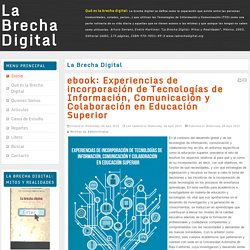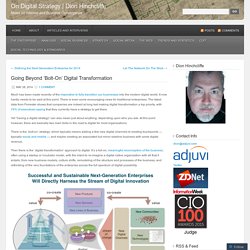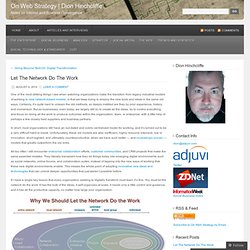

Home - SkillsCommons Repository. Strategic Intelligence. European Institute of Innovation & Technology (EIT) My Research in a Nutshell. The human species can be defined by its special ability to manipulate symbols.

Each great augmentation in this ability has brought enormous economic, social, political, religious, epistemological, educational (and so on) changes. I think that there has been only 4 of these big changes. The first one is related to the invention of writing, when symbols became permanent and reified. The second one corresponds to the invention of the alphabet, indian numerals and other small groups of symbols able to represent “almost everything” by combination. The third one is the invention of the printing press and the subsequent invention of electronic mass media.
. (1) an artificial language that automatically computes its internal semantic relations and translates itself into natural languages, (2) a metadata language for the collaborative semantic tagging of digital data, (4) a programming language specialized in the design of semantic networks, Like this: Like Loading... Home - Richard Sennett. Innovación social. Cohere >>> make the connection. Main Page - Comunica iGuides.
InfoDev. Blogs. Open Culture. ONG Derechos Digitales. John Moravec Presentations. La Brecha Digital - El Portal - Principal. Created on Wednesday, 08 April 2015 Last Updated on Wednesday, 08 April 2015 Published on Wednesday, 08 April 2015 Written by Administrator En el contexto del desarrollo global y de las tecnologías de información, comunicación y colaboración hoy en día, en entornos específicos como la educación superior, prevalece el reto de resolver los aspectos relativos al para qué y el cómo de su incorporación, es decir, con qué objetivos, en función de qué necesidades, y con qué estrategias de organización y recursos se llevan a cabo la toma de decisiones y las iniciativas de la incorporación de estas tecnologías en los procesos de enseñanza aprendizaje.

Descargar libro en formato ebook. Este libro se realizó en colaboración entre los siguientes cuerpos académicos de la Universidad Autónoma de Baja California Luis Lloréns Báez, Alma Lorena Camarena Flores, María Luisa Castro Murillo, Delia Chan López, Yessica Espinosa Díaz Claudia Figueroa Rochín, Thalía Gaona Arredondo. Apoyo al Autoaprendizaje: Kolaboraccion Conocimiento-Colaborativo. USUARIA - Asociación Argentina de Usuarios de la Informática y las Comunicaciones. Going Beyond ‘Bolt-On’ Digital Transformation. Much has been made recently of the imperative to fully transition our businesses into the modern digital world.

It now hardly needs to be said at this point. There is even some encouraging news for traditional enterprises: The latest data from Forrester shows that companies are indeed at long last making digital transformation a top priority, with 74% of executives saying that they currently have a strategy to get there. Yet “having a digital strategy” can also mean just about anything, depending upon who you ask. At this point however, there are basically two main forks in the road to digital for most organizations: There is the ‘bolt-on’ strategy, which typically means adding a few new digital channels to existing touchpoints — typically social and mobile — and maybe creating an associated but minor sideline business with some digital revenue.
Then there is the ‘digital transformation’ approach to digital. Many industries even today are resistant to digital. Seek out digital change. Let The Network Do The Work. One of the most striking things I see when watching organizations make the transition from legacy industrial models of working to new network-based models, is that we keep trying to employ the new tools and ideas in the same old ways.

Certainly, it’s quite hard to unlearn the old methods, so deeply instilled are they by prior experience, history, and momentum. But as businesses, even today, we largely still try to create all the ideas, try to control everything, and focus on doing all the work to produce outcomes within the organization, team, or enterprise, with a little help of perhaps a few closely held suppliers and business partners. In short, most organizations still have an out-dated and overly centralized model for working, and it’s turned out to be a very difficult habit to break. If I have a single key lesson that every organization seeking to digitally transform must learn it’s this: You must let the network do the work.
Additional Reading: What Is the Future of Work? Open source is changing the world: join the movement.